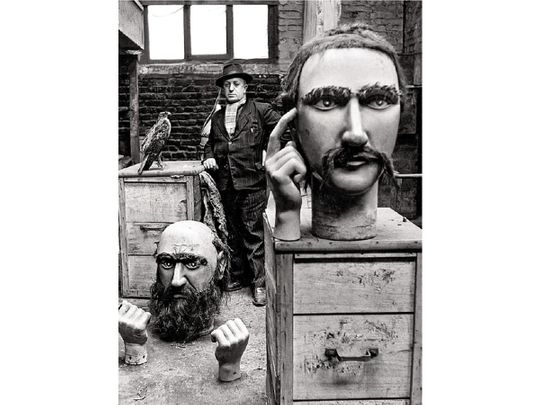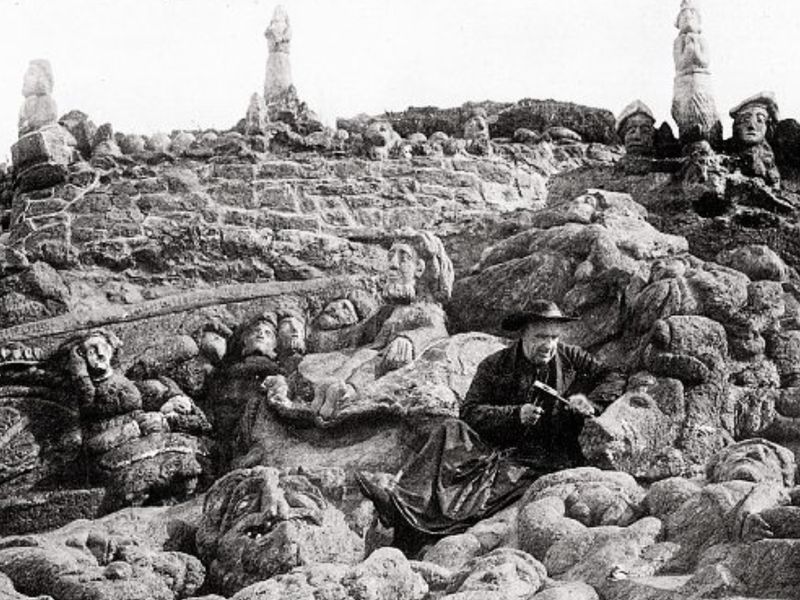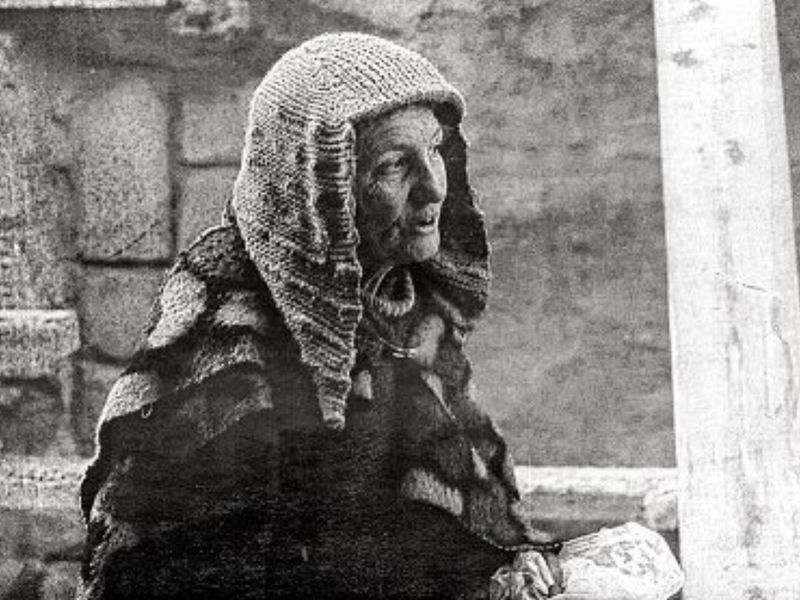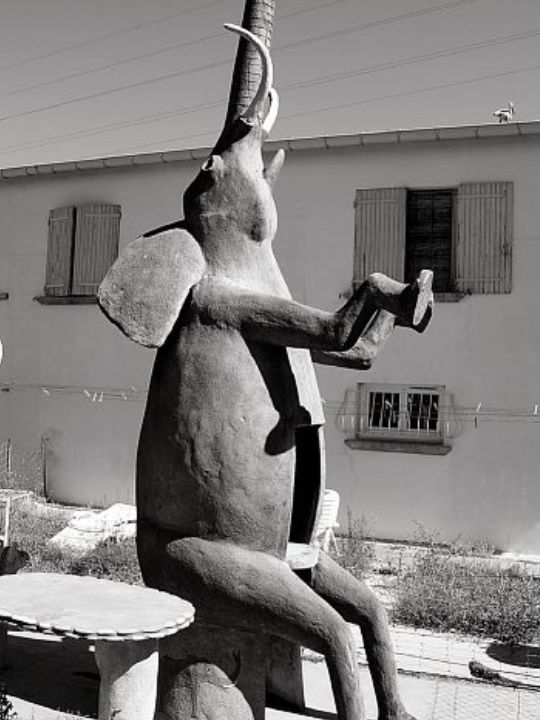
Highlight
This huge collection is the first inventory of spontaneous art in France. An offbeat gathering of roadside geniuses.
Photos: Gamma-Rapho / Robert Doisneau / DR / Courtesy Editions Du Sandre / Marie Cailler
Have you ever had visions while driving, of coming upon, at a bend in the road, the Loch Ness monster, a barbecue shaped like an elephant, or a painted statue of Aldo Maccione? This is no dream. And yet it’s a miracle that these solid creations have not caused more road accidents. With his book Le Gazouillis des éléphants, ("Elephant Babble") Bruno Montpied has compiled the first inventory of such places in France. Spontaneous and fanciful environments created in the noble wake of the Postman Cheval and his Ideal Palace. But experts in French outsider art are careful not to conflate “marginal art” with “modest art”. “Since these works were made to be seen from the road, they are different from marginal art, which is usually hidden or often discovered after the artist’s death.” So what should we call these self-taught creators working outside the mainstream art world? “They don’t call themselves artists”, says the book’s author, “they really dislike the label!” According to research and documentary films, these “inhabitant-landscapers,” who so fascinated André Breton, Guillaume Apollinaire, Robert Doisneau and Gilles Ehrmann, were called the “roadside creators" or the "builders of the imaginary". Bruno Montpied, also self-taught, began compiling this fragile inventory of French roadside creations in 1979. A huge task, a great achievement. And what an achievement! Without a driving licence.

On every page, the heavy-duty guide expresses his sense of awe (there are no addresses, so that the owners will not be disturbed). Fernandel and his cow are common themes, but you can also find Dalida and the Abbé Pierre, or less consensually, Mireille Mathieu slaying Hitler. The fanciful structures and whimsical odds and ends built by these heavenly DIY creators are mostly to be found in the Auvergne-Rhône-Alpes and Pays de la Loire regions of France. “It often begun after the age of retirement, to fight against social isolation, Bruno Montpied tells us, himself a young retiree at 62. “It’s a little bit like when someone is drowning and they start kicking to get back to the surface in order to overcome a challenge such as an illness.” The motivations of these modest artists are sometimes just as baffling as their creations. Here’s how one of them, René Jeanthon, justifies it: “It is a way to meet women.” It is not clear whether this method was successful. Another creator, working day and night like a sleepwalker, prefers to attract the attention of the "extraterrestrials who live in the seas up there". Sometimes, it happens that the creations are met with incomprehension and provoke acts of vandalism. One victim had to rebuild his work three times after it was damaged. “But after some documentaries were broadcasted, opinions changed, and now they are getting a little more attention”, Bruno Montpied reassures us.
At the end of the inventory Montpied provides some surprising statistics about each artists’s former profession. Masons, labourers and panel beaters have the lion's share. There are a few religious people - like Abbé Fouéré and his sculpted rocks - farmers, butchers, telephone operators and blacksmiths. Or even a hairdresser, a doctor, a clothing seller and, incredibly, one of General de Gaulle’s bodyguards. It’s a pleasant surprise to find a total of eight women in this diverse population, including the prolific Jeanne Devidal, a concentration camp survivor who built her “anthill house".

She even inspired a novel, La Femme murée. Although our specialist came across a number of people with disabilities, he notes only one case of suicide. And a few fairy tales. Such as the adventures of Jean Molette, a huge fan of Napoleon III who made an impressive statue in his garden of his hero as the Saviour of France. The parish priest thought it was a good idea to write to the Empress Eugenie to inform her of this tribute. Deeply moved, the emperor gave the artist his own bar-tabac (newsagents with a bar)! In contrast, the reactions of Christine Lagarde, François Holland and Professor Calculus, whose statues adorned a garden in Poule-Les Écharmeaux, may never come, after the site of Marcel Vinsard, the self-proclaimed "man with hands of gold," was dismantled in 2016. During his hospitalisation, shortly before his death, the statues disappeared one by one from the garden. For works that, even in the past, would invariably have ended up in the tip, it marks the beginning of an apotheosis for these spontaneous works of art.



